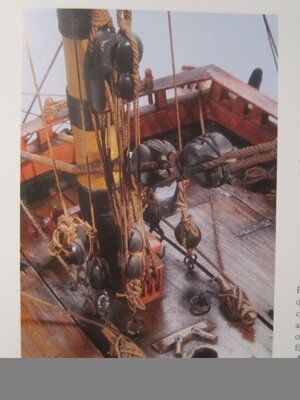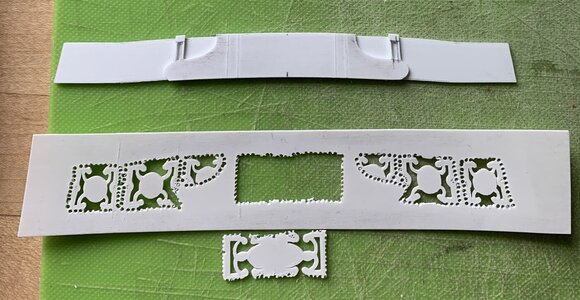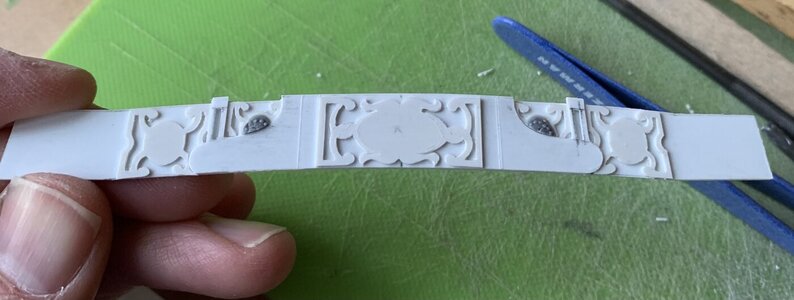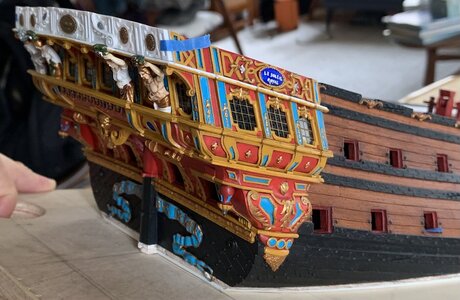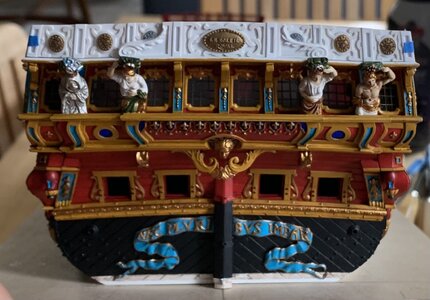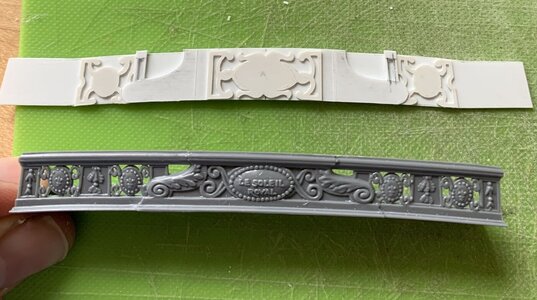The pleasure is all mine, Uwek.
Work on the open-walk aft bulwark, continues at a steady pace. The piercings are too narrow to work with files, so the entirety is cut to the line with a No. 11 blade:


It is an easy thing to extract these panels, all around their perimeter, but I will leave them intact for the time being. Next, I will cut the pilasters and the projecting center portion. Then, assembly can begin from the center, outwards.
As I mentioned, prep of the upper bulwarks is proving to be quite intensive. I decided the best approach for building up the hull was to begin with the forward bulwark pieces. To that end, I installed the beakhead bulkhead, and glued-in a strip of re-enforcement, where the bulkhead meets the main deck.
What immediately became apparent, once this piece was secure is that the bulkhead is not square with the centerline:
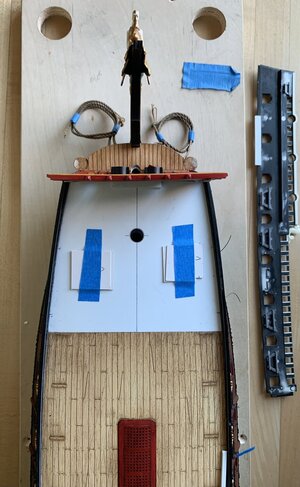
This mirrors the same problem that I have noticed at the stern. Essentially, my ship is a parallelogram:
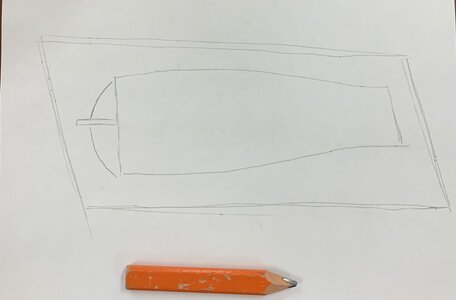
Obviously, this is not ideal. It is hard to say with any certainty, at this point, but the error must have been introduced at the very earliest stages, when I glued the lower hull halves to the plinth-base; I must have induced the port side to slide aft, somewhat, or perhaps didn’t realize the geometry that I was creating through some other error or oversight:
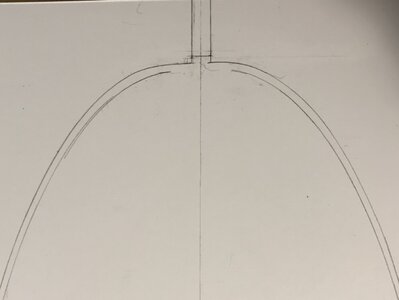
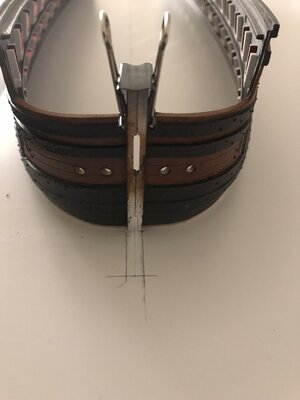
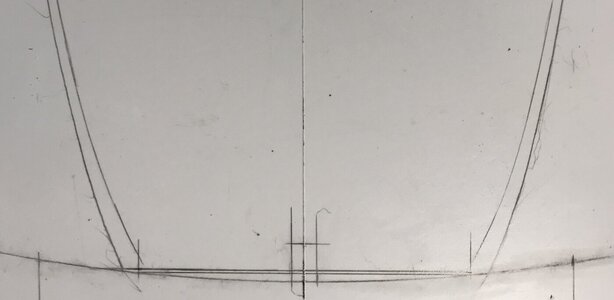
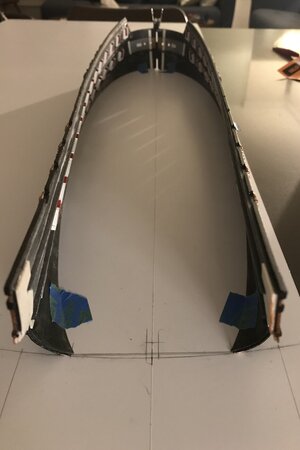
This second stern picture seems to show the problem, but this is really a perspective problem of the photograph. I know that my rounded stern counter started as a squared layout with the centerline. Whatever the case may be, now the job is to make it all look okay.
Among the myriad tasks for the upper bulwark prep, I glued-in the kevels, scraped away the forward-most monogram escutcheon (because there will be a robed figure just aft of the headrails), filled all of the remaining holes and low fairleads for the sheets and tacks.
One error of the Heller kit is that the entry points for these lines are all low, where they would run a-foul of the gun carriages. To correct these errors, I recycled one of the Four Winds carvings to make chess-trees for the fore and main tacks. I then decided to make a housed double sheave for the fore and spritsail sheet lines:
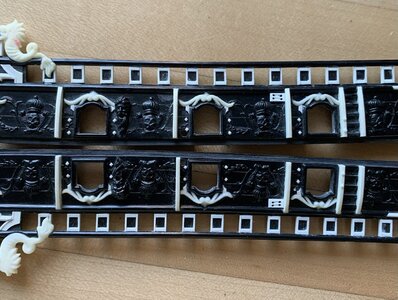
I based the decision to do this on Puget’s drawing of the Royal Louis, following her refit in 1677:
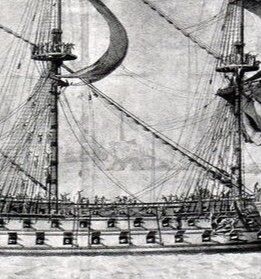
Frolich’s L’Ambiteaux of 1680 is also a solid reference for this detail.
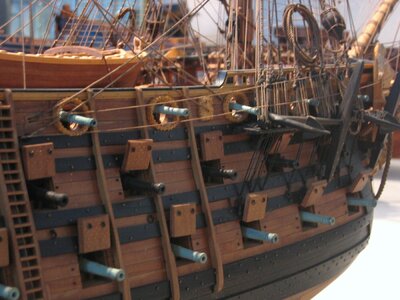
One other unintended consequence of my hull-widening modifications is that the extreme ends of the beakhead bulkhead now sit about a 1/16” below the top sheer of the forward upper bulwark piece:
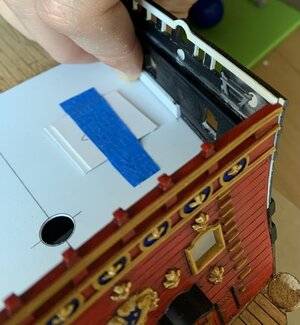
This was perplexing to me until it dawned on me that the beakhead bulkhead side-extensions follow the top-rail camber, so that now that arc extends further outboard and intersects with the bulwarks (which are still the same height, naturally) at a lower point.
This creates something of an interesting dilemma. For the time being, I have decided to take a little authorial license, here. Although I can find no pictorial evidence for this on contemporary models from the 17th C., I have fashioned an entry-point for the cathead line, along the top of this beakhead railing:
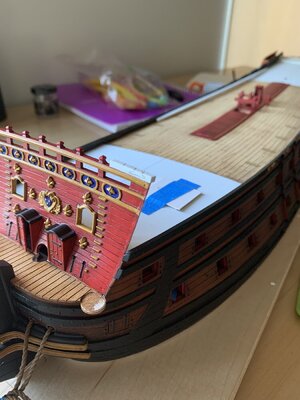
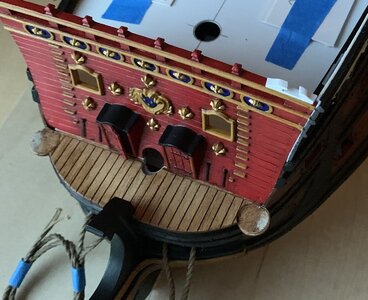
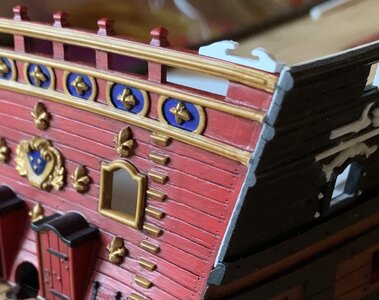
I have subsequently filled that small forward gap and refined the shape of this cleat(?), a little. My argument for plausible deniability, here, is that the intersection of the cathead timber with the beakhead bulkhead is now closed-in with plank, yet the cathead line needs a working contact point for sweating onto the small kevel.
In the end, there will also be a horsehead sculpture that rests on top of the bulwark top sheer. Even if this detail isn’t correct for the period, it’s presence will be minimized from the outside looking-in.
The other major consideration for these forward bulwark pieces is that the joint to the lower hull is just garbage. I had to do quite a lot of fairing to close the gaps along the outside of the joint, and there remains some significant tension as one flexes the part into its place.
I may, ultimately, induce a bit of a bend into the part by clamping it into a form and leaving it like that for a few weeks. That should take tension out of the piece and ease the assembly process. Regardless, though, I wanted some added insurance, and so I glued an additional re-enforcing strip that will bridge the joint and increase glue surface-area.
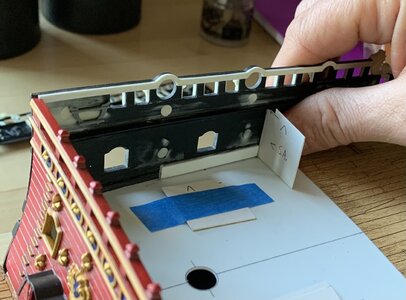
Just fore and aft of this strip, I will fashion gusset pieces that lend additional strength, while also providing deck beam mounts for the forecastle deck. Above, I am fitting card templates that I will use to pattern the 1/16” styrene sheet gussets. All of this structure will not be visible from the waist, nor will it interfere with the ship’s stoves.
In the waist, where this joint would be visible, I will cover the joint with spirketting. Just as before, the added glue-surface will really solidify the construction.
Before I can paint these bulwark pieces, I still need to fashion a supporting knee that will be visible from the waist overhang of the forecastle deck.
In a departure from my usual, I will be airbrushing the primary ground colors, as there is too much fine detail that might be obscured by brush-painting.
All of this will, of course, take time. Thank you for stopping-in!
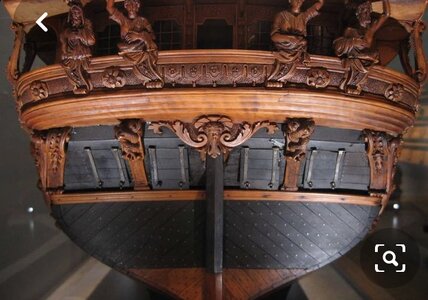





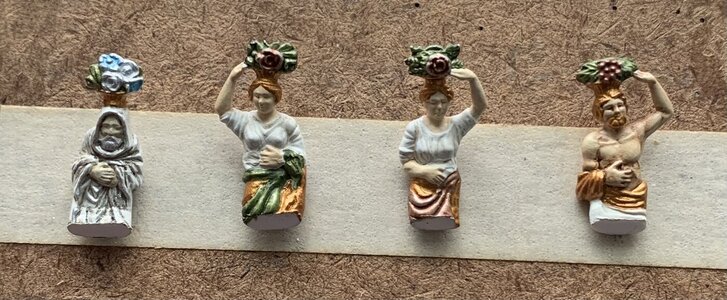
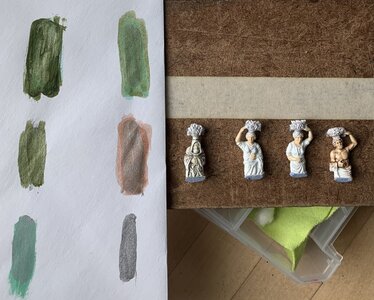



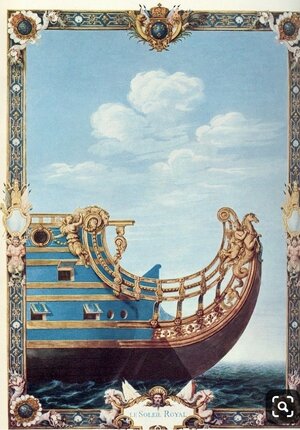
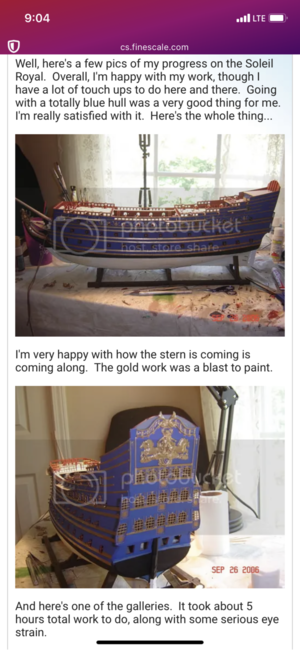
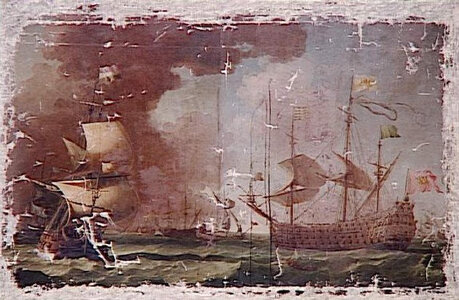
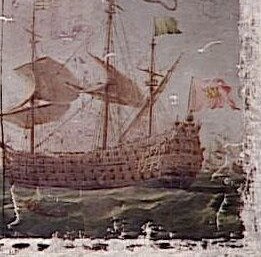
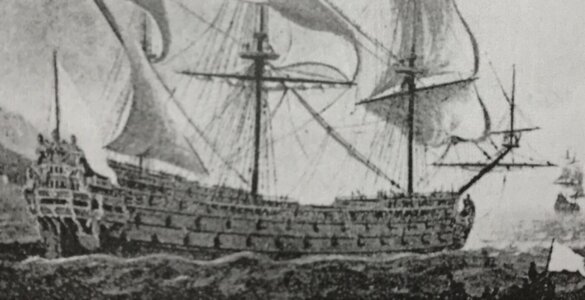
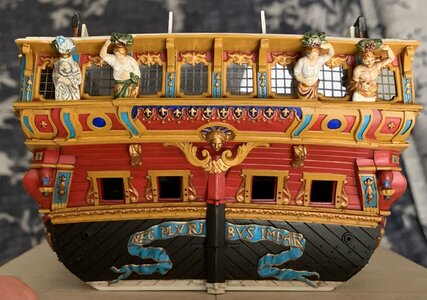
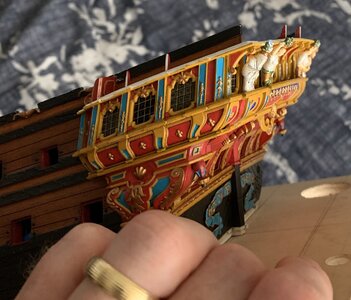
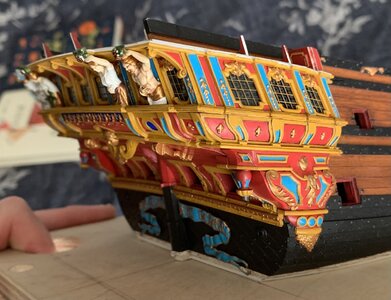
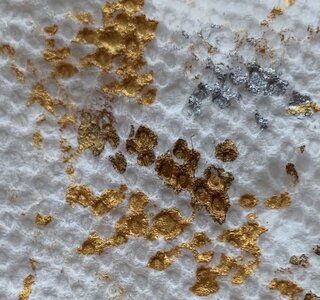
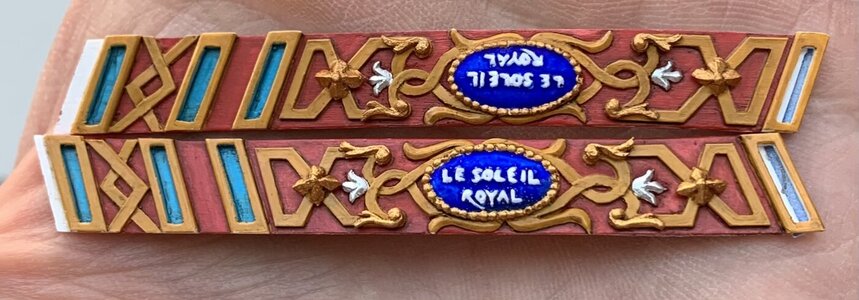
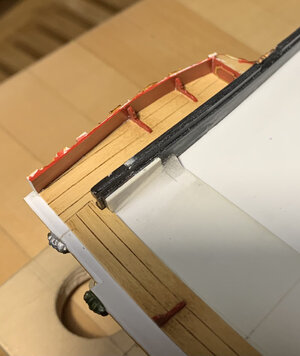
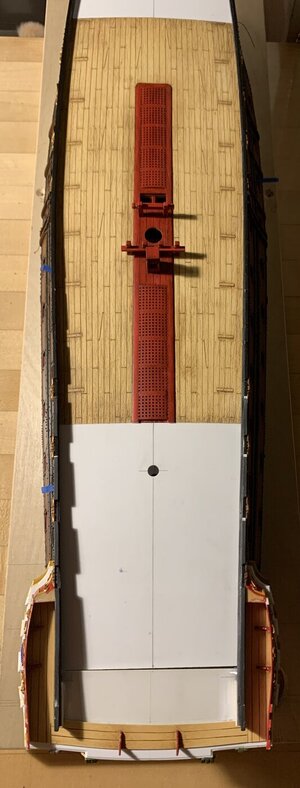
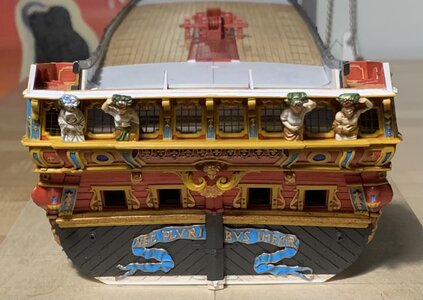
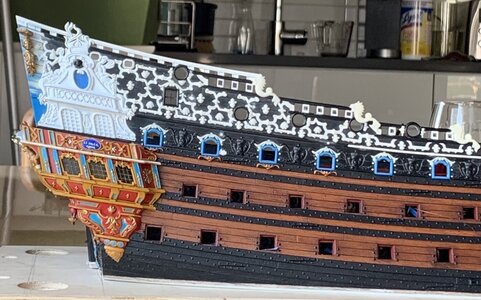
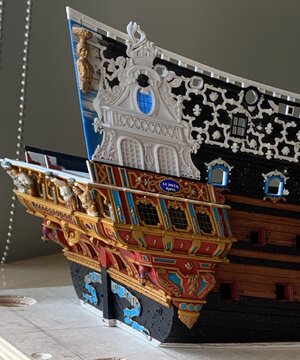
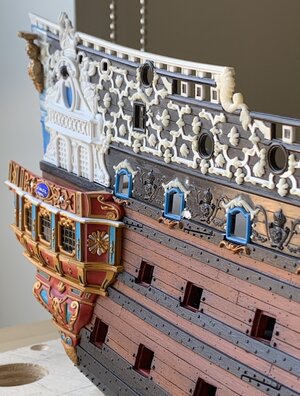





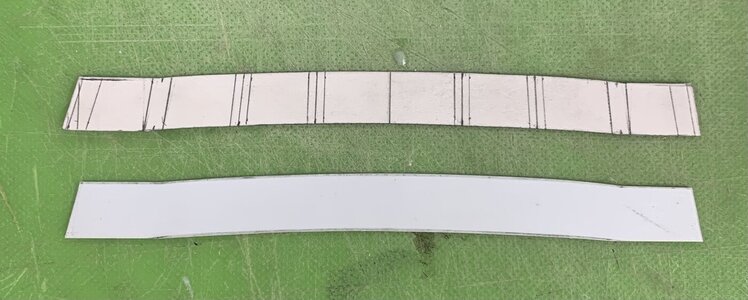
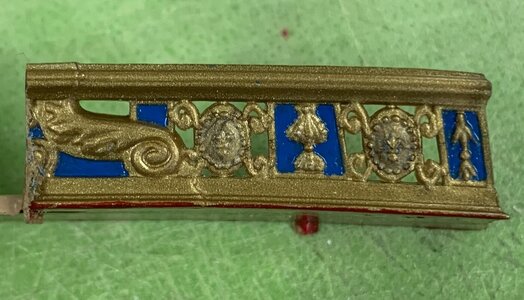

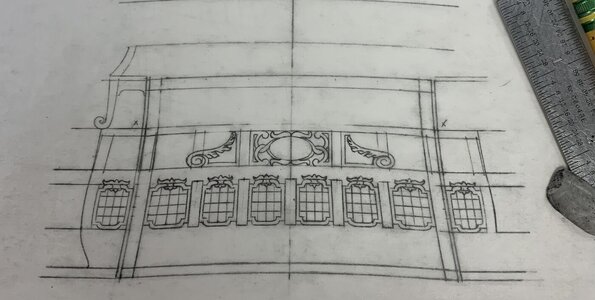
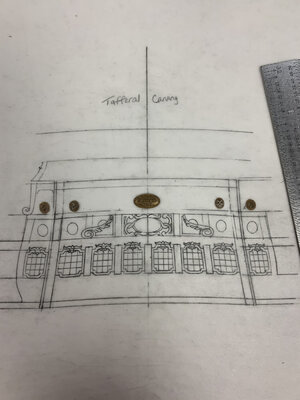
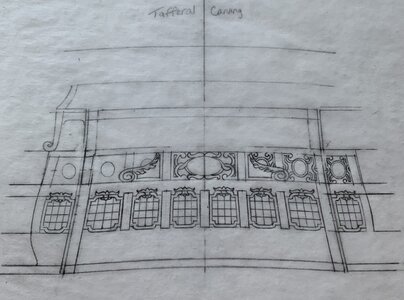
















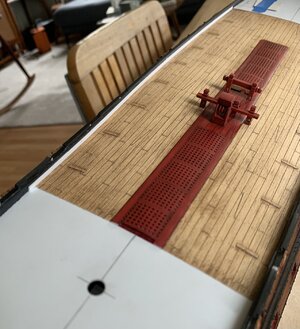
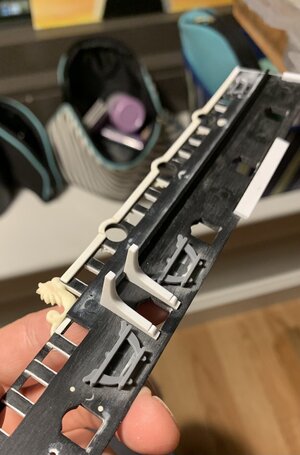
 ) will help with the layout of the forecastle; I need room for the deck railing supporting knees, the stove chimneys, and the capstan drum. There must be enough clearance for the capstan bars to travel without interfering with the fore bitts. There is some debate as to whether a forecastle capstan would really have been a feature of a First-Rate from this time, however the Louis Quinze model features a vacant space where the drum should be:
) will help with the layout of the forecastle; I need room for the deck railing supporting knees, the stove chimneys, and the capstan drum. There must be enough clearance for the capstan bars to travel without interfering with the fore bitts. There is some debate as to whether a forecastle capstan would really have been a feature of a First-Rate from this time, however the Louis Quinze model features a vacant space where the drum should be: